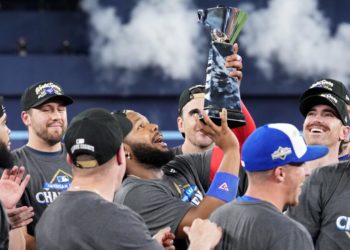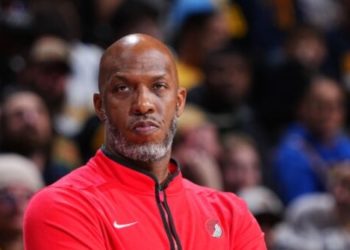When federal authorities on Thursday unsealed sprawling charges of illegal gambling that rocked the basketball world, one of the indictments accused mafia members and former professional basketball players of working together to profit from rigged poker games.
Here are some of the most notable details from that case:
Famous people were paid to recruit wealthy players for the game.
Mafia members helped organize and provide security for the rigged poker games. But to lend credibility to the games, the mafia members needed former professional athletes like Chauncey Billups and Damon Jones, who were known as “face cards.”
The role of the “face cards” was to invite wealthy people to participate — in exchange for a portion of the illegal profits, according to prosecutors.
The players cheated with sophisticated technology.
Court documents detailed all the ways the games were rigged, reading like scenes from the movie “Ocean’s Thirteen.”
The machine that shuffled the cards was not just randomly mixing them up: It had technology hidden inside that could read the cards in the deck, predict which player had the best hand and then relay that information to somebody off site. That person would then use a cellphone to communicate the intel to someone at the table, who would steer the other cheating players with secret signals, like tapping certain chips or body parts.
In some of the rigged games, the poker chip trays had hidden cameras that could read the cards on the table. The cards also sometimes had markings that were visible only to people wearing specially designed contact lenses or sunglasses.
Losing players faced the threat of violence and extortion.
The rigged card shuffling machines were so important to the scheme that a group of the defendants robbed someone at gunpoint to steal a specific model of the machine from him. The indictment doesn’t name the victim.
When players failed to repay the debts they accrued from the poker games, the defendants used extortion and threats of violence to get their money, prosecutors said.
The case involved different mafia families operating illegal gambling dens.
One game, controlled by the Bonanno crime family, was hosted primarily at 147 Lexington Avenue in Manhattan’s Kips Bay neighborhood, prosecutors said.
Another, controlled by the Gambino crime family, was hosted primarily at 80 Washington Place in Manhattan’s West Village neighborhood, they said.
The games also took place in the Hamptons, Las Vegas and Miami, prosecutors said.
Nicole Hong is an investigative reporter, focused on covering New York and its surrounding regions.
The post Here’s How the Poker Scheme Worked, According to Prosecutors appeared first on New York Times.




